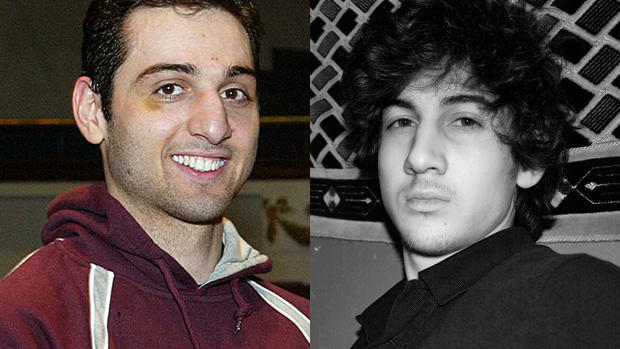Hospitals quick to implement lessons from Boston, but funding a concern
Nurse Fran Damian arrived 10 minutes after the first Boston Marathon bombing patients were brought into Boston Children's Hospital. When she looked around, the bustling hospital was filled with critical and emergency care staff rushing to help care for three critically ill victims. Other staff were relocating emergency department patients from earlier to make room for the mass casualties that were set to come in.
Elsewhere, a coordinated all-hazards response team was talking with the hospital about what resources were necessary on site and in the facility. They were negotiating how much security was appropriate so the clinical staff didn't need to worry about feeling safe.
Call-in trees were being activated to bring more staff to the hospital. However, since many employees were either attending the marathon or living close by, doctors and other medical professionals had arrived at Boston Children's even before their phone rang.
"Things went extraordinarily well," the director of nursing and patient services in emergency medicine said with pride to CBSNews.com.
Hospitals around the U.S. constantly drill for emergency situations like the Boston Marathon bombings, natural disasters and chemical spills, and Boston-area facilities are no different.
Rebecca Cahill, emergency management program coordinator at Boston Children's Hospital, said that over the three years she's been at the facility, emergency management is something they've focused on. Throughout the year, they conduct drills in conjunction with other agencies and organizations, and once a year they go through a hazardous vulnerability analysis to look at the risks on each campus and satellite sites of their network.
But, practice never provides the same lessons that real-life experience can give. Barry Wanted, director of Emergency Management at Brigham and Women's Hospital, said that while the staff was prepared for Monday's victims, they were surprised by the speed at which the first patients were arriving. They were forced to relocate current patients and find spaces for casualties coming in at lighting speed.
"Most in our favor was the number of medical and first responder resources on scene," Wanted explained. "The difference was as far as implementing some of our immediate plans. Normally, in some of the other incidences where there have been multiple injuries, we have a little more time before the first patient arrives. First dispatch sends the first responders, and then they come in. In this case, the transports were almost immediate. Some of the first patients arrived 15 minutes from the first explosion."
The following day, Brigham and Women's Hospital and Boston Children's Hospital began to debrief their staff about what went wrong, what went right and what they needed to change for next time. Throughout the country, hospitals began to look over their own plans.
"We are a terrorist target in New York," Tony Egan, manager at North Shore - Long Island Jewish Health System, explained to CBSNews.com. "We have to prepare for those man-made events, and we have to prepare for, as history has shown us as well, natural disasters like Hurricane Sandy... The fact that we have world travelers that can bring disease (is a constant threat)."
- Doctors describe horrors, chaos after Boston Marathon bombings
- Anxiety is normal, but PTSD may simmer in children who've seen Boston Marathon bombing
Using scenarios that were encountered at the Boston Marathon, North Shore - LIJ Health System will conduct a drill with FEMA's Center for Domestic Preparedness on April 25 at Long Island Jewish Medical Center in New Hyde Park, N.Y. Their staff will be training with other hospitals, first responders and government agents to practice how to decontaminate patients from the field and how to get them the proper care.
Three weeks later at another at Lenox Hill Hospital in New York, another North Shore - LIJ Health System hospital, they'll have an internal drill to prepare for a pandemic outbreak. They've integrated some aspects experienced by the Boston Marathon bombing into this practice scenario.
North Shore - LIJ Health System isn't new to dealing with emergency situations. With several hospitals in the New York area, they dealt first hand with 9/11 victims. But in 2009, they were faced with an emergency situation of another beast: the outbreak of H1N1 virus, which was brought to the U.S. by students from St. Francis Preparatory School in Fresh Meadow, N.Y., who had traveled to Mexico.
"Our law enforcement agencies have done a great job of thwarting terrorist attacks," Jim Romagnoli, vice president of emergency management at the North Shore - LIJ Health System in Great Neck, N.Y., explained. "Unfortunately we have no control over diseases in other countries, and because we are such a melting pot of ethnicity we have people traveling all over the world and returning here. When they come home here, who knows what they are bringing? (New York) takes in 1,000s of people a day."
Across the country, Los Angeles faces other unique battles. Besides natural disasters like earthquakes being a constant threat, the city's vast area means that coordination between facilities is important. There are 13 disaster resource centers and 85 9-1-1 receiving facilities.
The 10 Medical centers on the west side of the city, which includes UCLA Medical Center, meet every other month to plan how to work together. On their own, UCLA also conducts a minimum of one full scale exercise within their designated area of coverage and one full city wide drill each year. The hospital itself runs drills each month with local fire, police and other organizations, based on different scenarios including active shooters, evacuations, decontaminations and earthquake preparedness.
After Boston, William Dunne, director of the UCLA Health System's Office of Emergency Preparedness, said that UCLA pulled out their plans and reconsidered what they need to change.
"We reviewed injury patterns that they saw in patients," Dunne described. "It changed our perspective when we're involved in mass gathering situations like marathons... We have the provision for medical care, but we need to have some flexibility and an open mind when patients need treatment. We know we'll see the typical sort of medical emergencies -- sprains and blisters -- but we need to make sure we're aware in any type of mass gathering event that we could have other emergencies."
Changing the protocols and plans comes with one major challenge for all the hospitals: money. As federal budgets and grants are being cut, funding for emergency preparedness -- while still an integral part of a hospitals' plans -- is shrinking. Brigham and Women's luckily purchased the last of their key decontamination equipment for hazardous emergencies last year. Had they still needed to purchase more equipment this year, these items may have been on the chopping block.
Other things that will need to be addressed in the future is psychological support for the staff who helped treat the Boston Marathon victims. Damian said while the hospital staff was great about talking to patients and addressing their needs, much of the hospital staff was left to deal with what they were seeing on their own.
"It was so really traumatic," Damian explained. "The injuries were devastating. There was a lot of uncertainly about what was happening and the risk of this event. A lot of guards made sure that we were safe, but it made people who were seeing patients, seeing more people who were coming in and seeing the walking wounded think that more things might occur."
Psychological programs cost money, and many emergency preparedness programs are already stretched thin. If there were more money, all the hospitals said they would purchase more equipment and be able to have more drills in case of emergencies in addition to other programs.
Romagnoli said while first responders like police and fire departments get funding, first receivers -- hospitals -- are often forgotten.
"We do not see that money, although we are expected to provide the same service as those agencies," he said. "We don't enjoy the same funding as they do."
Romagnoli said North Shore-LIJ would expand their education with more funding. They'd have more situational events and hire more full time emergency management staff. Right now they are forced to run drills at their own facilities, to cut down on travel cost and address the problem of not having staff to work when people leave to train. If they had the money, Romagnoli said he'd love to send his staff to state-of-the-art training programs to have them be better prepared.
Even with all the money in the world, Dunne points out that the individual has to be aware that they play a major role in emergency preparedness.
"The biggest thing we're fighting is complacency," Dunne stated. "We want to make sure to engage people that preparedness starts with the individuals, starts with family units and spills into our communities and state and federal government. We have individual accountability around being prepared. Physicians and nurses and all of our faculty and staff probably not going to be very productive and instrumental in taking care of patients that need them as much as individuals."


